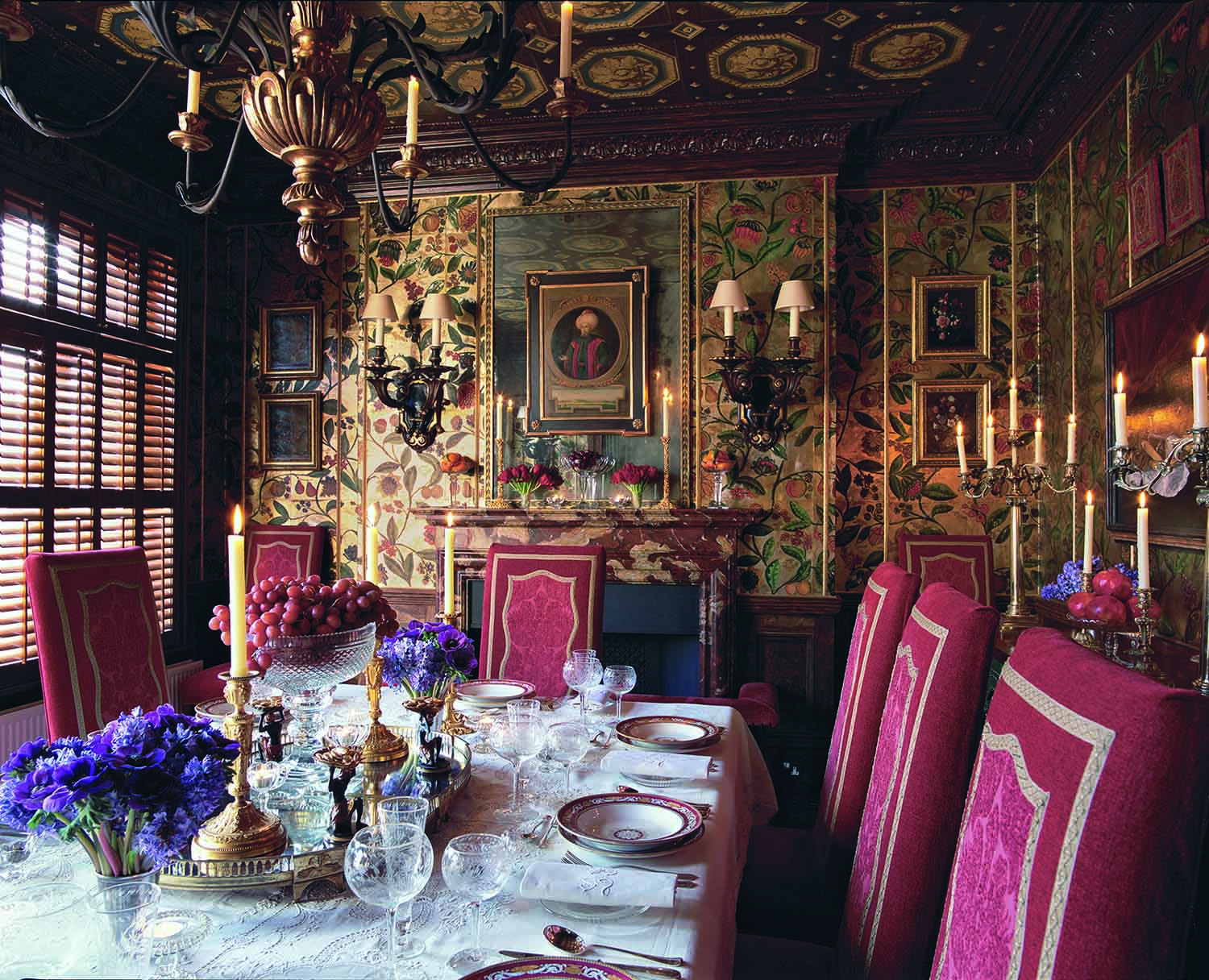
The use of embossed, decorated leather panels to clothe walls was highly popular in Europe throughout the 17th and 18th centuries. The embellished look gives me the essential boldness I always aim towards as well as giving me the potential to create any number of new reflective colour and pattern combinations. To balance the walls in this London dining room, I created a version of an Italian coffered ceiling using tromp l'oeil because, in this environment, the ceiling had to be as detailed as the walls.

A detail of the hand painted Augustus Console Table from my own Alidad Velvet Furniture Collection, against the back drop of the leather walls add to the textures of the room.
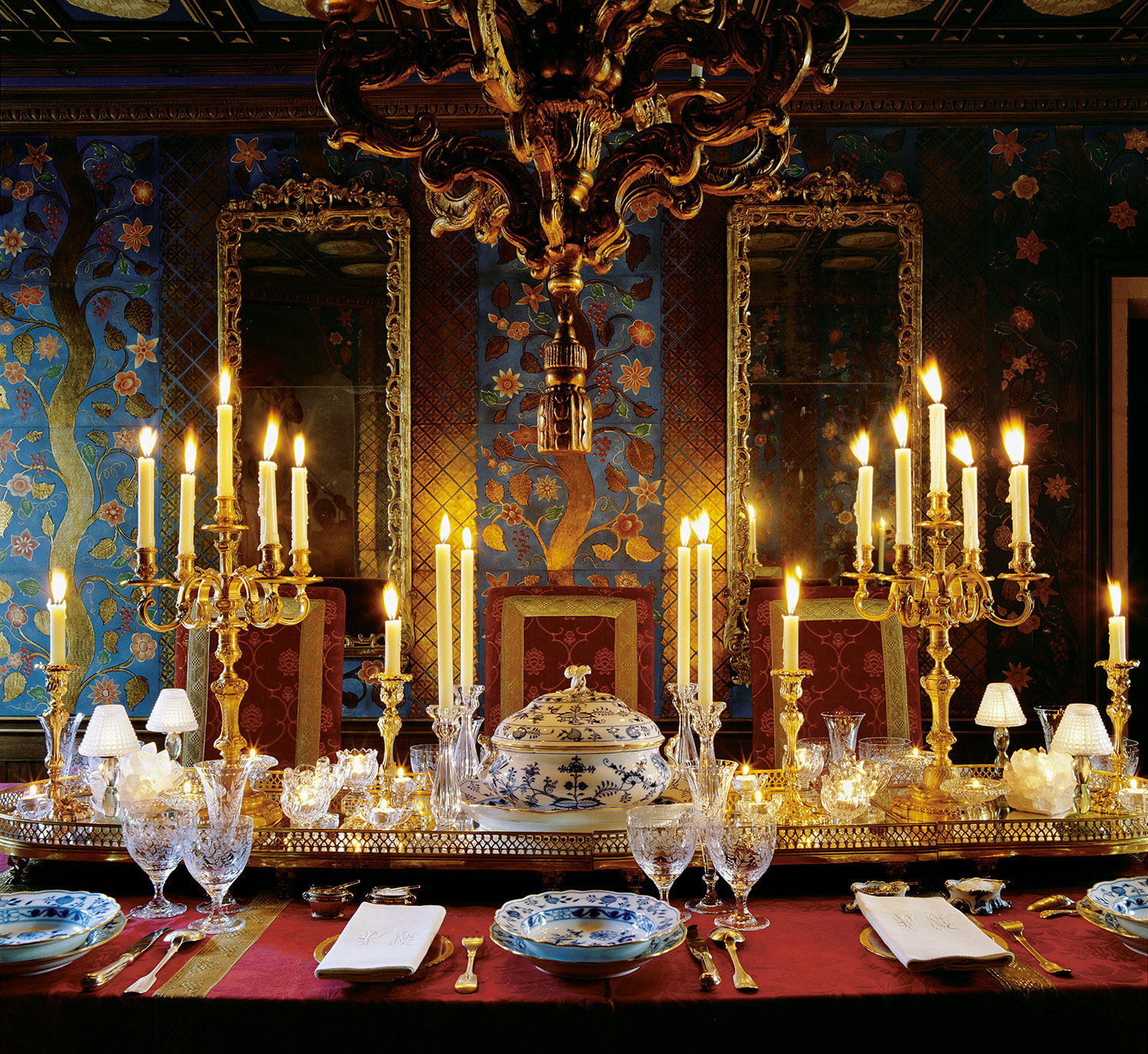
I wanted anyone who cames into this 17th century Parisian appartment to have the impression of being transported into a jewel-like box of make-believe where every vertical suface is decorated in a combination of stamped and painted leather. There is no sign of electricity, although it is there, hidden and used purely for the practocal purposes of being able to see to clean the room.

The embossed, highly decorated leather extends from the walls to the cornice. The effect then continues to the hand-printed trompe l'oeil coffered ceiling. Light comes purely from the many candles, making the room appear to glow as a result of the soft and golden reflection from the walls. This is reflected back by the many glass, crystal, gold and china peices on the central surtout-de-table, including the antique blue-and-white Meissen dinner service.
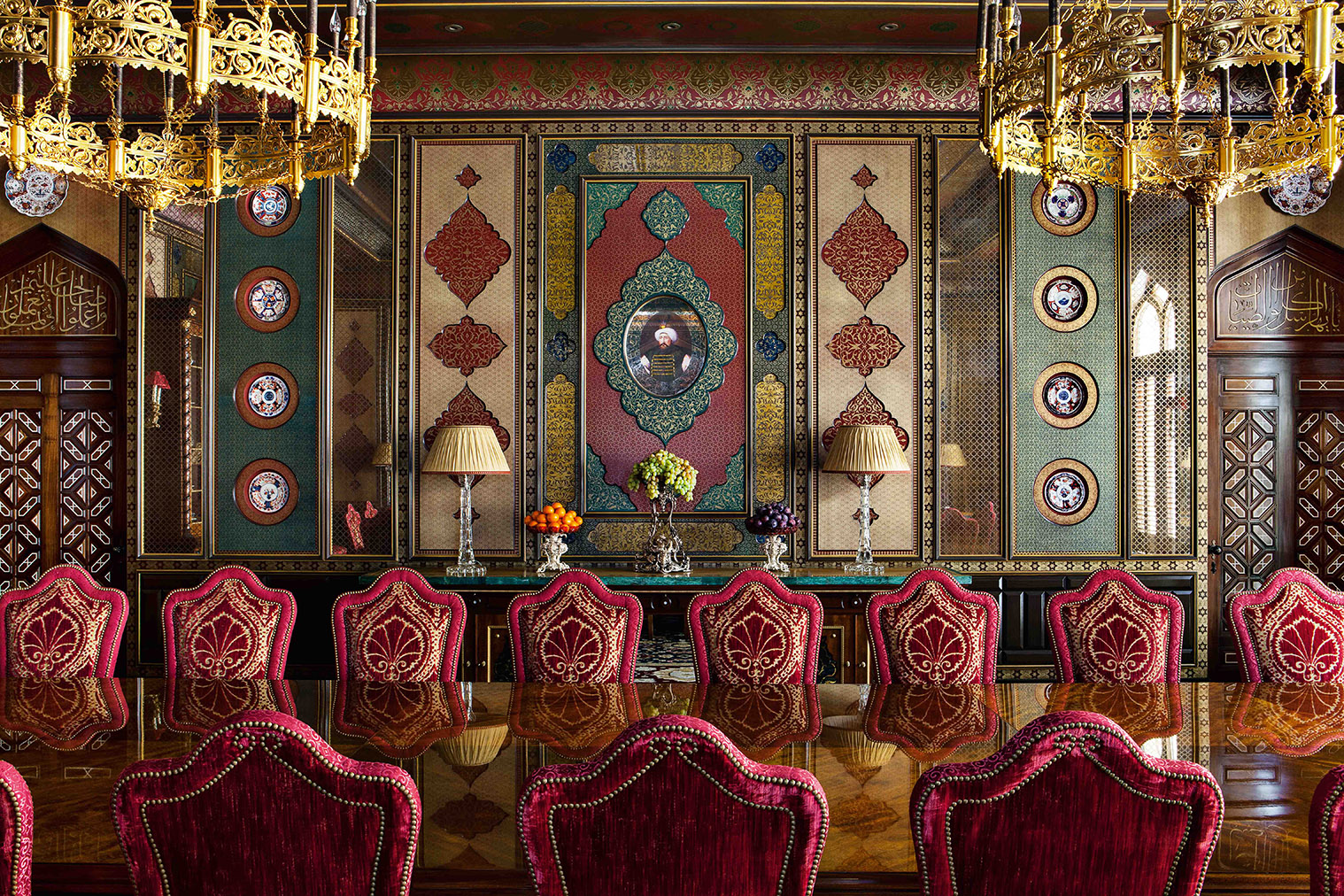
There are so many different patterns, motifs and levels living together in this scheme: glass that is underpainted and glass that is overpainted; hand-printed papers and hand-painted Sultan portraits; painted and gidled wood moldings; and the borders for the series of sunken Japanese Imari ceramic plates.
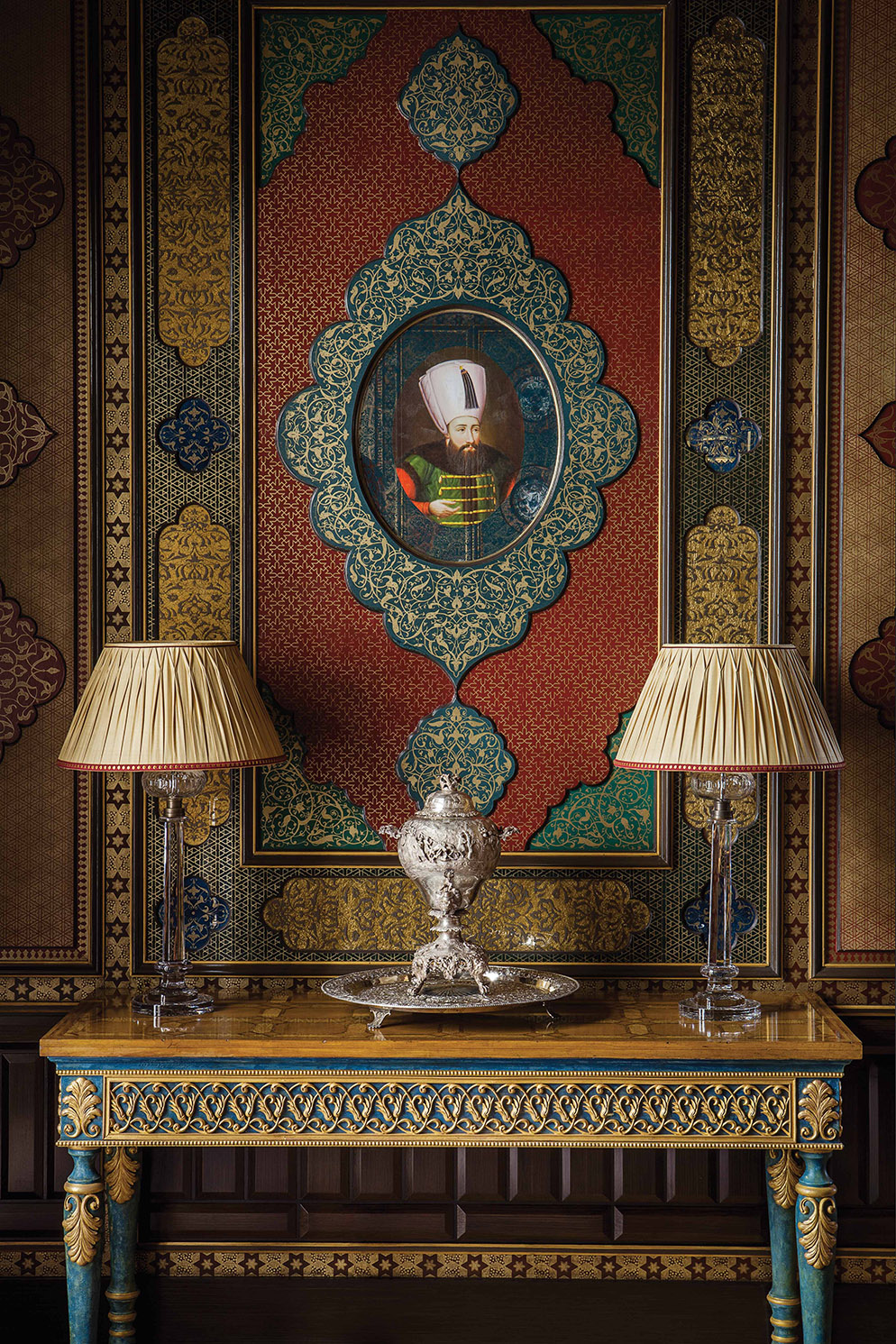
Here you can see how the hand-painted portrait of a Sultan has been surmounted by a blue vere eglomise frame that is surrounded by a hand-painted paper that is then edged with a painted and gilded molding. The nineteenth-century samovar echoes the shape of the Sultan's framing, and I like the lamps for their scale and simplicity.
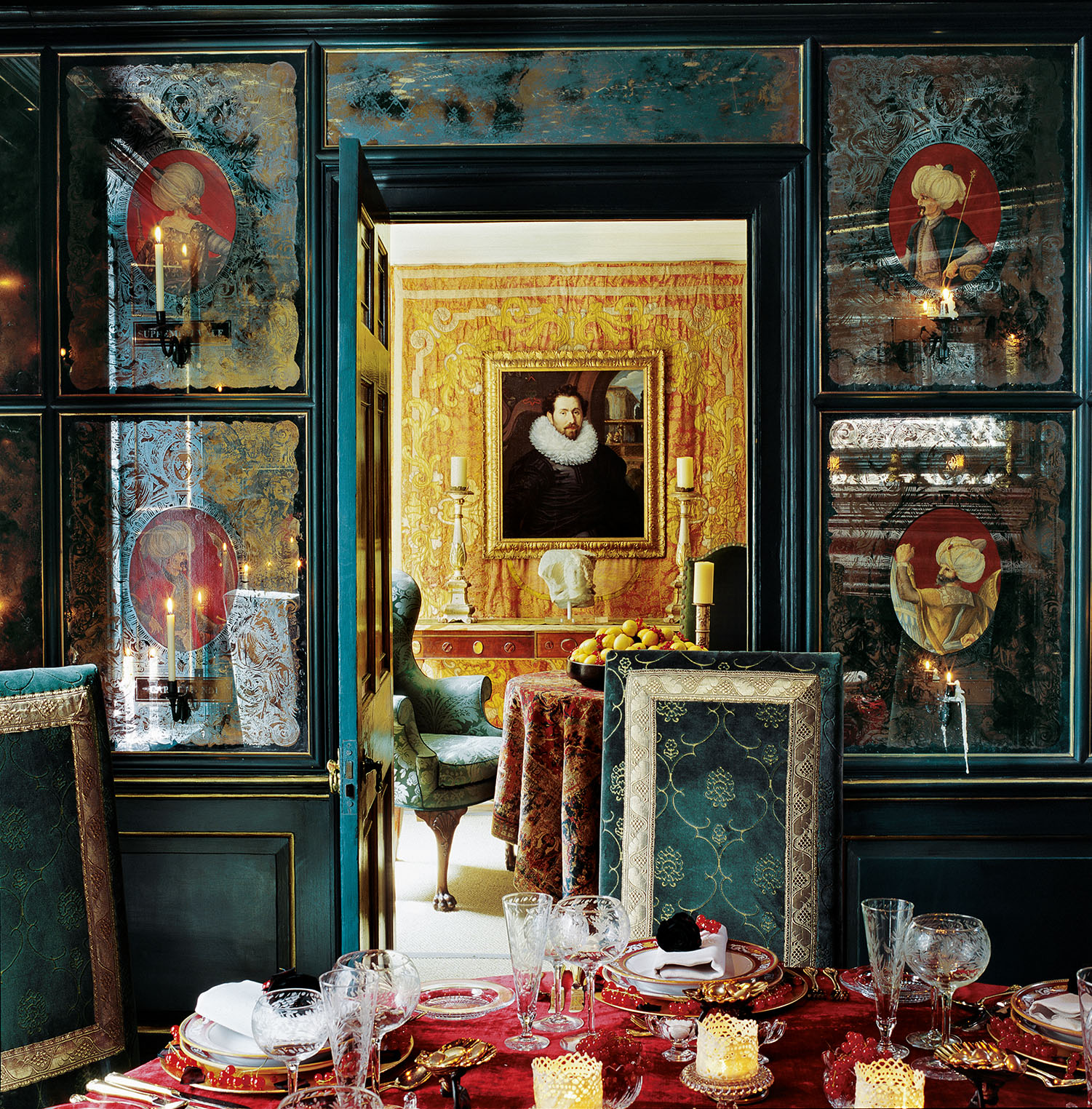
The design for the hall and dining area in this Queen Anne London house developed through my fascination with the contrast in view as you look from one space into another - this is one of the ways I can create surprise and a delightful kind of interest and vision for the space. Dining rooms are a place where you can let your imagination go. At the core of this Ottoman Style dining room are the reproduction verre eglomise panels and antiqued painted wood, create something that would look magical at night, with mirrored surfaces and candle light.

You can let your imagination go with dining rooms. At the core of this Ottoman style dining room are the reproduction verre églomisé panels and antiqued painted wood, create something that would look magical at night, with mirrored surfaces and candle light.
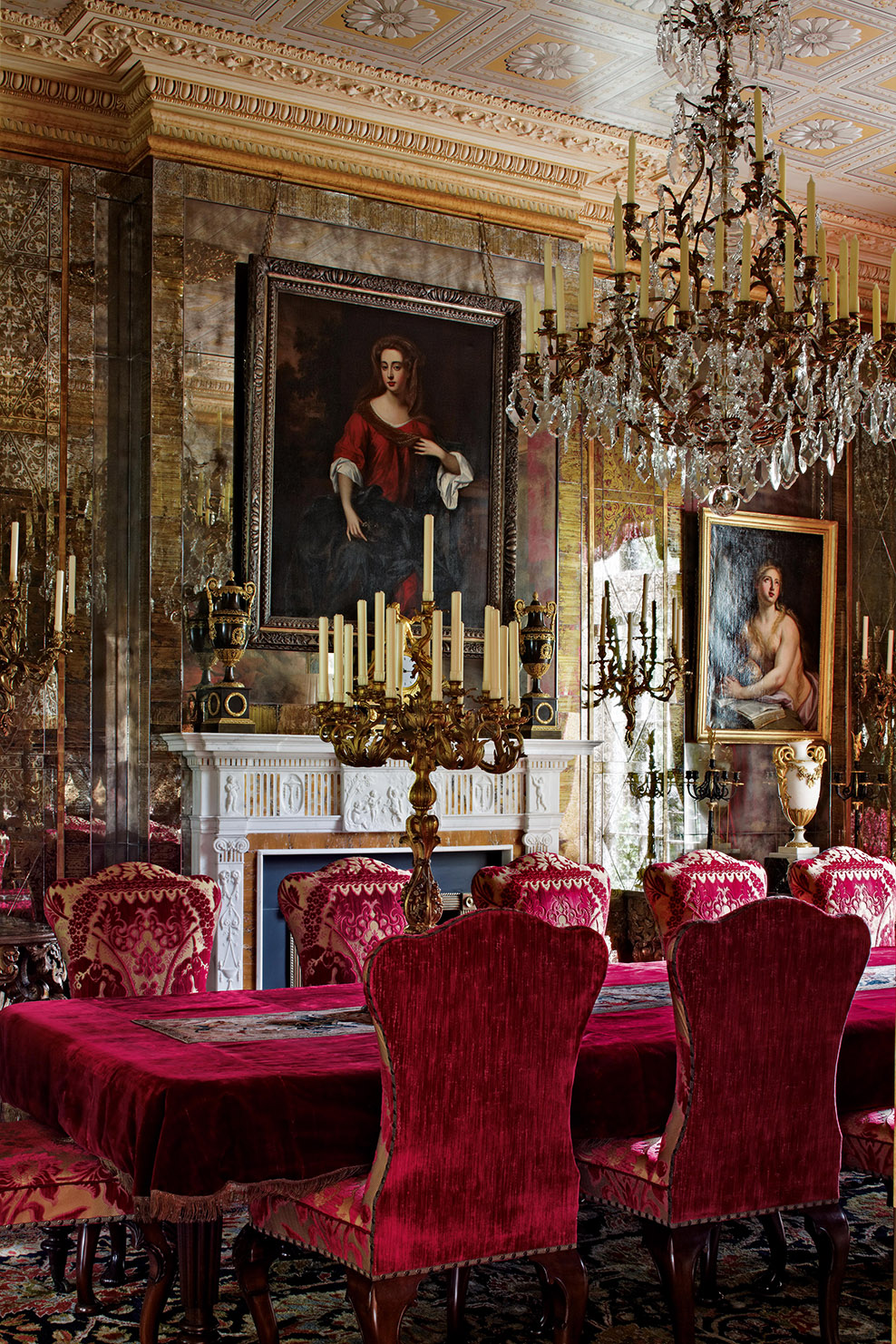
Every millimeter of these London dining room walls have been decorated with a paneled mirror treatment, creating a beautiful effect at night. This room can only be lit by candle, the giant ormolu and crystal chandelier had to have a concealed winch mechanism to raise and lower the piece to light, extinguish and change the one hundred or so beeswax candles.
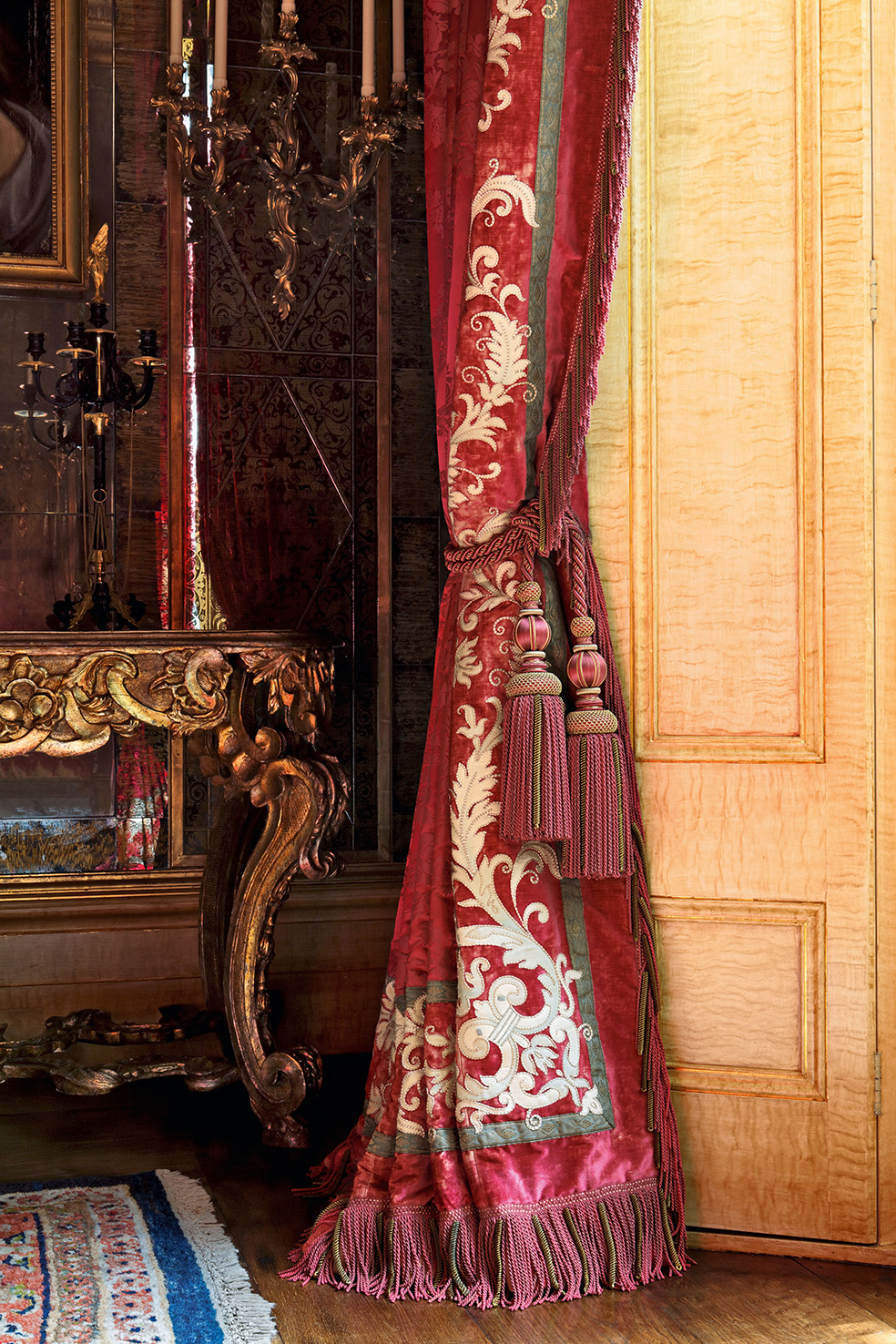
This London dining room exudes its own atmosphere of ageless and spirited humour. My way of mixing old new with a restrained kind of abandon gives me the freedom to create spectacular curtains where, in a dining room like this anything less than a magnifcient result would fail the space.
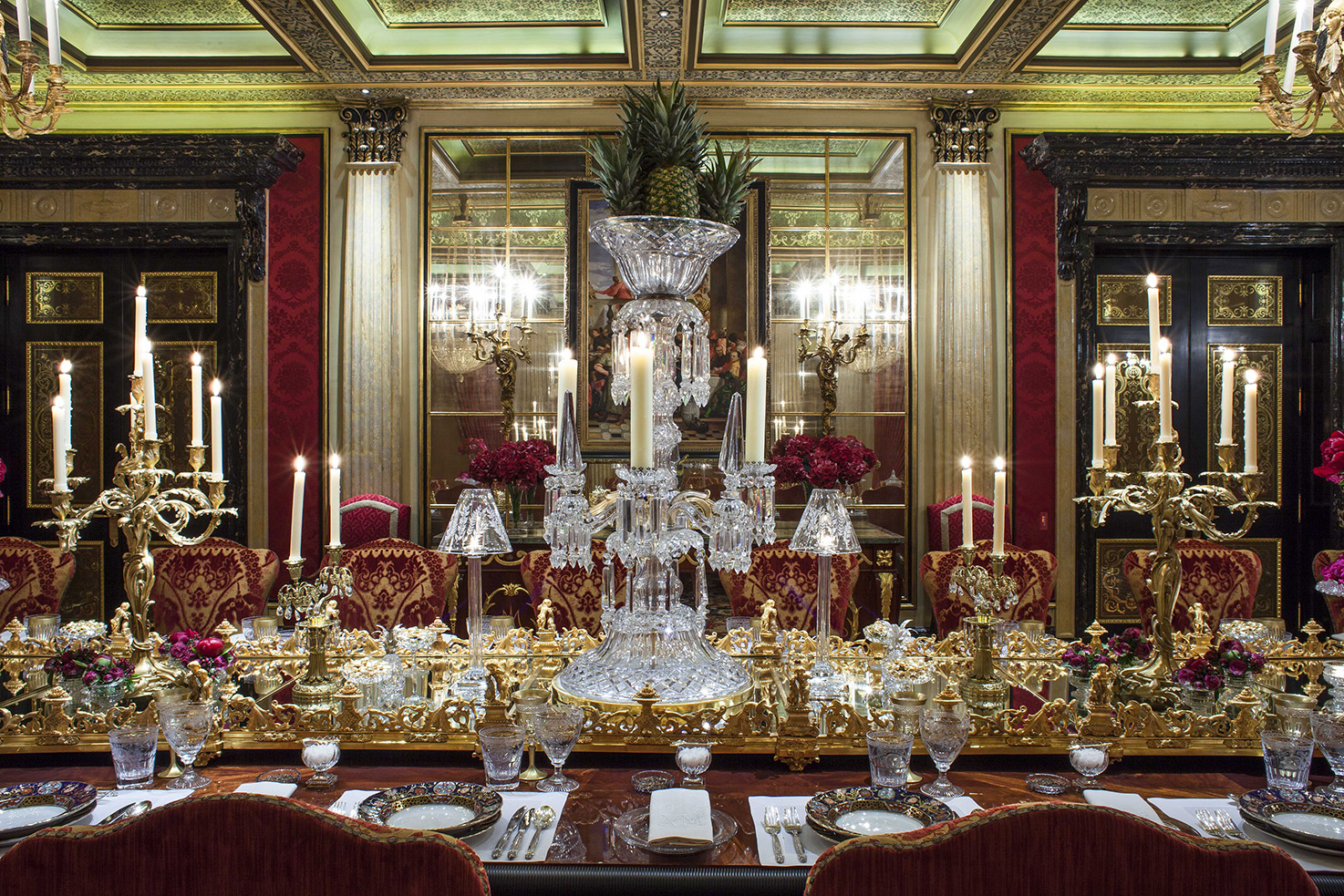
The 18th century surtout de table, which runs almost the full length of the table in this dining room, sets off a sparkle created by its reflective surroundings. I use this kind of table centre because its base is also mirrored, which increases the many hundreds of reflections created by numerous candles, crystal and gilded glass. The formal table setting is finely tuned to suit the rest of the decoration that makes every use of reflection, from the mirrored and fabric walls to the highly decorative coffered ceiling.
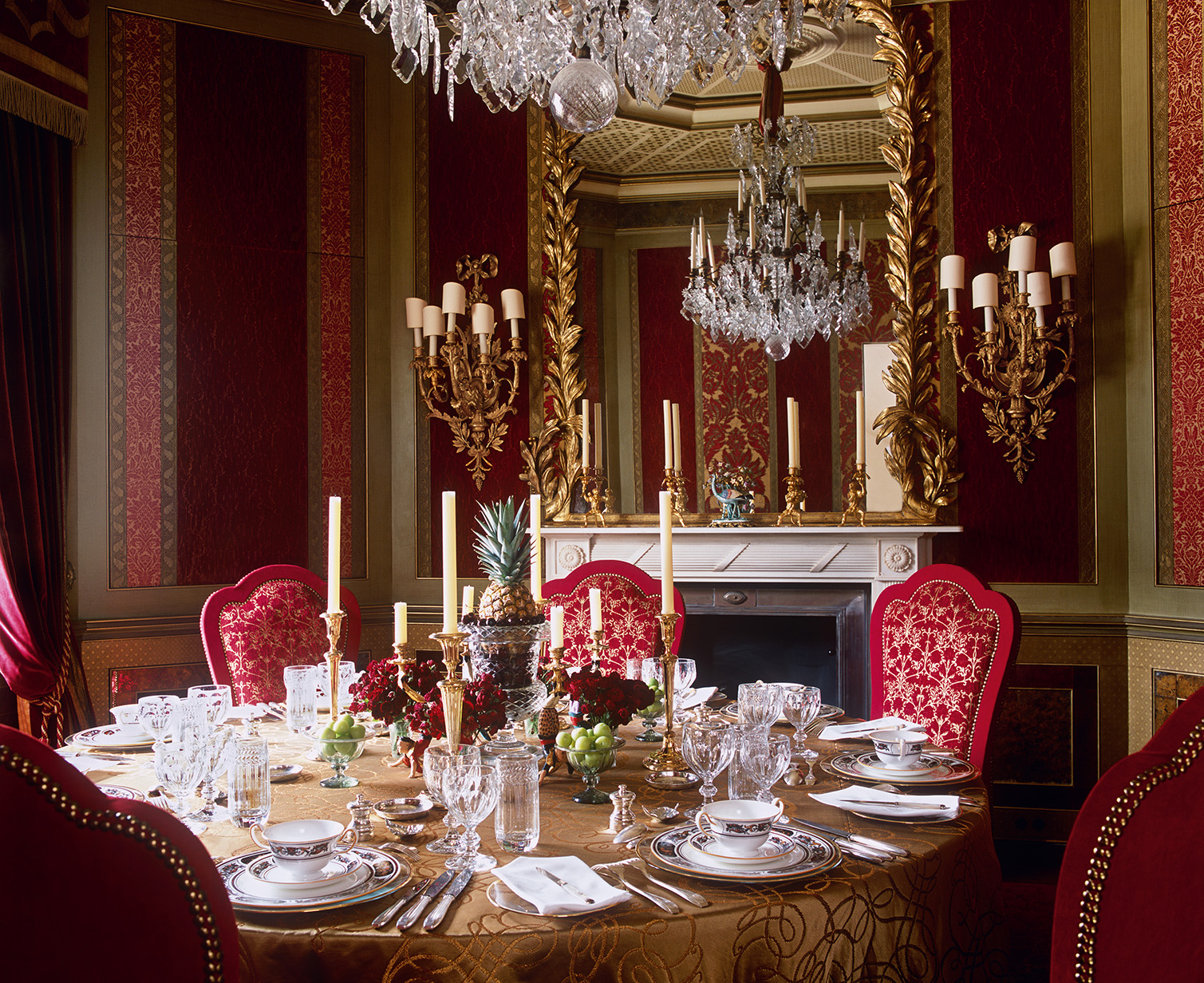
This dining room is an excellent example of the fine line between too much and too little. I achieved the delicate result by keeping a light hand throughout the process of combining seventeenth-century Italian appliqued panels set into velvet wall panels, trimmed with gold braid and then edged with antiqued brass beads.
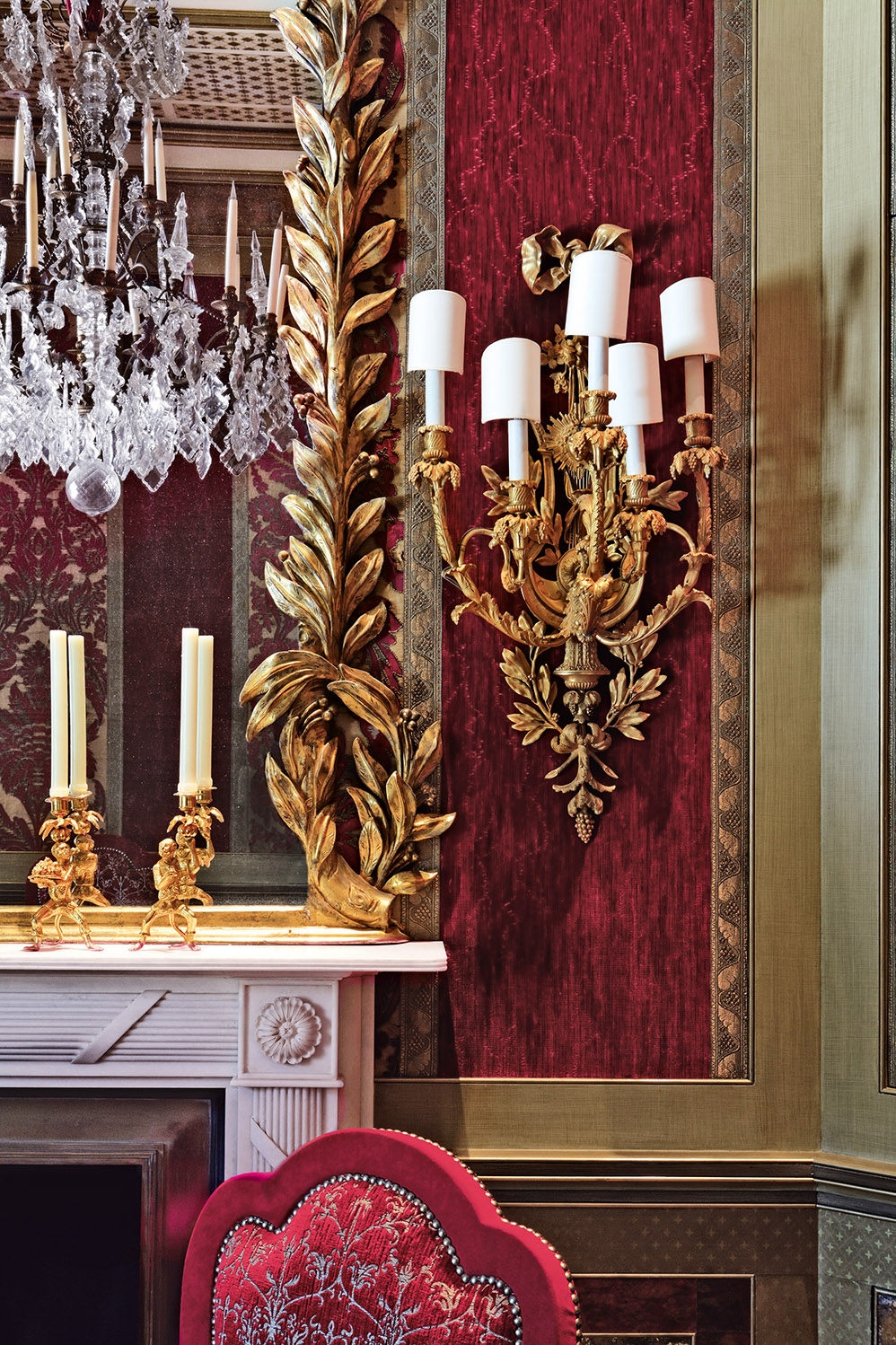
Every aspect of this scheme is bespoke, including the paneling surrounding the gilt mirror.
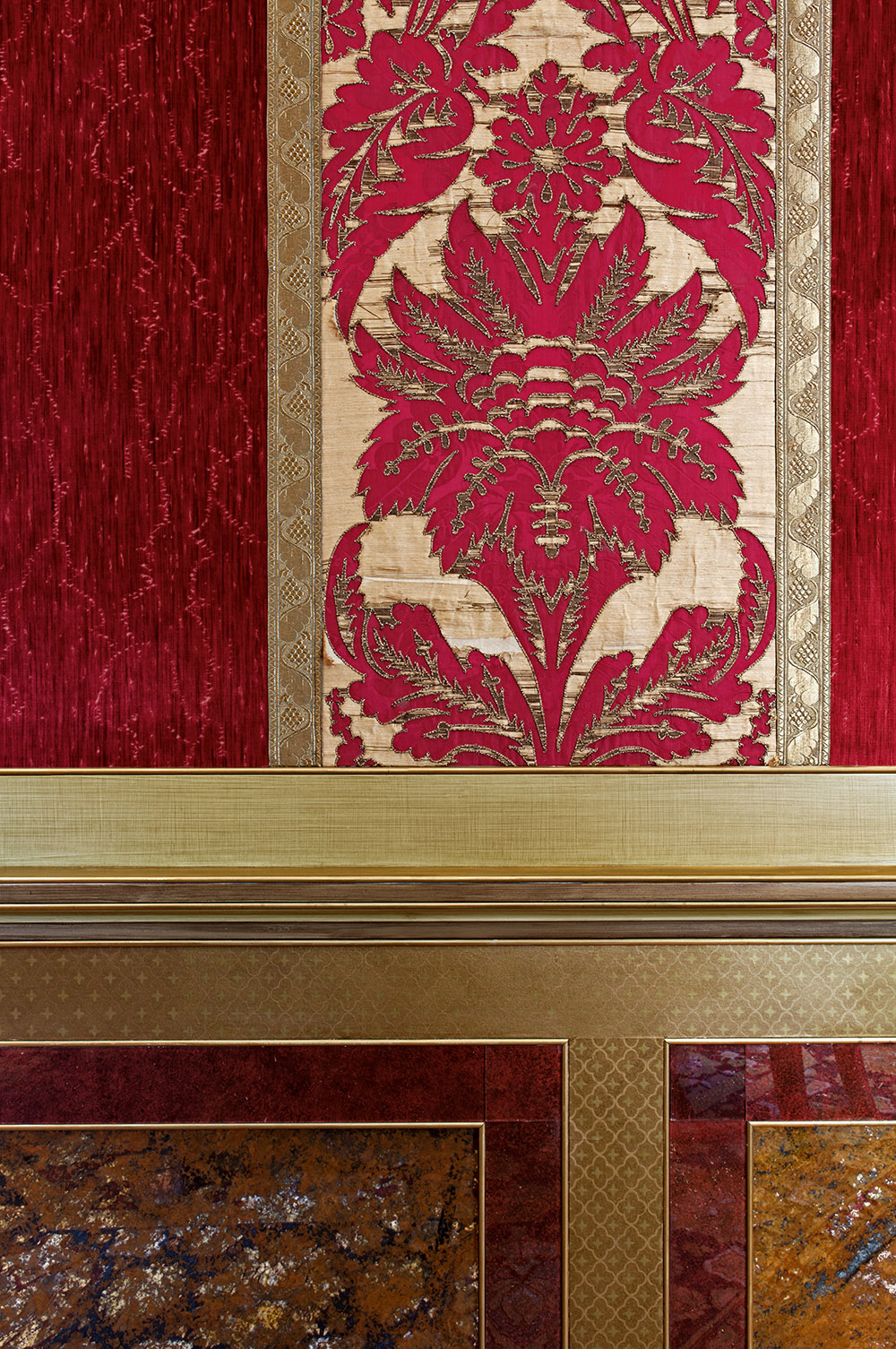
Verre eglomise and hand printed paper panels that imitate fabric sit above the decorated dado rail.
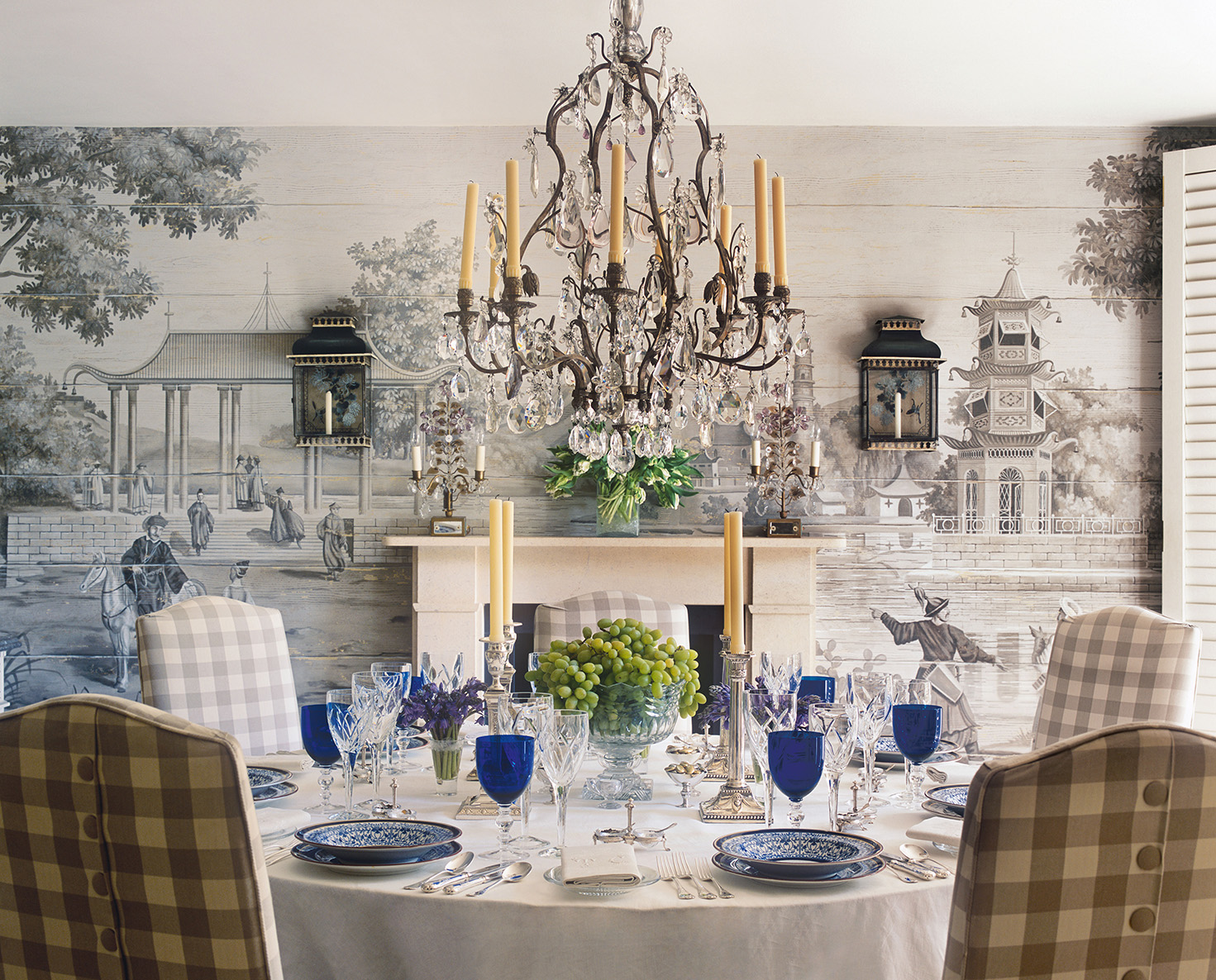
The idea behind this London breakfast room was to create a tempting atmosphere at all times of the day, not only for breakfast but for lunch and dinner as well, during both formal and informal occasions.















